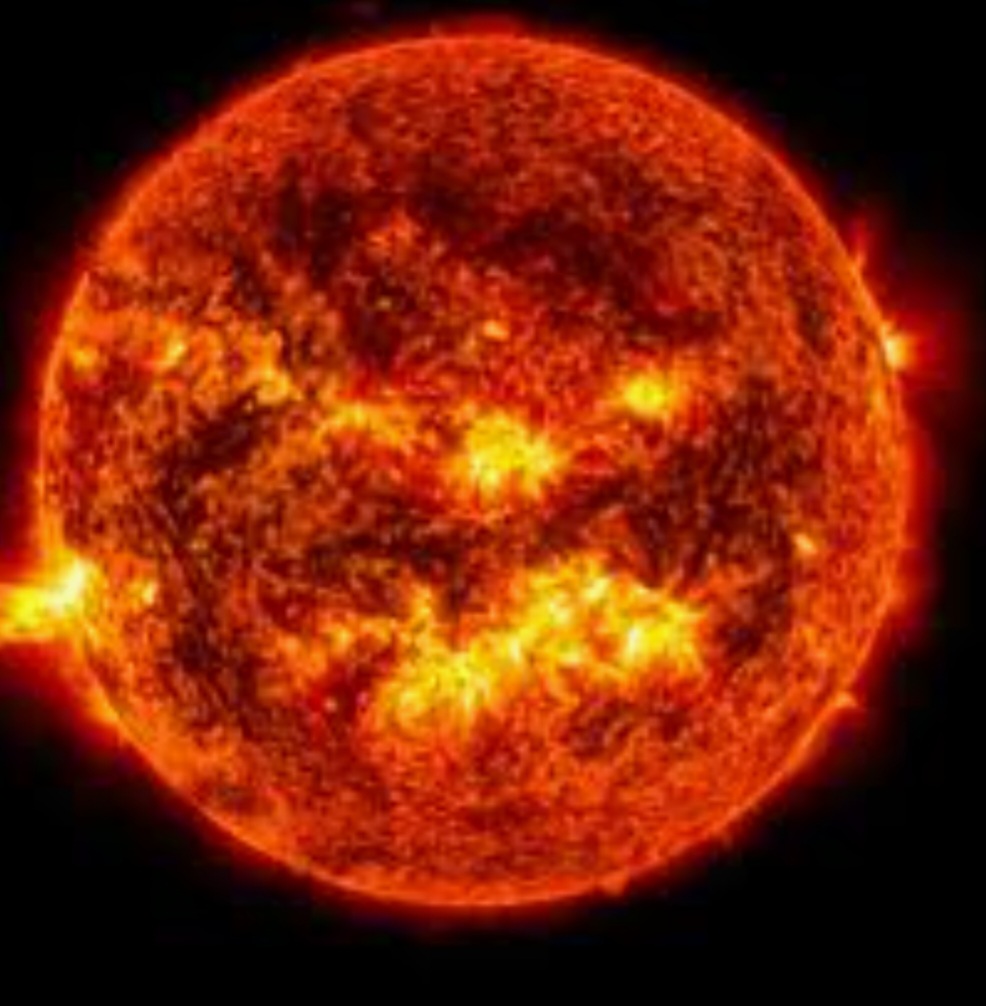The sun was created from a collapsing cloud of gas and dust called the solar nebula. Around 4.6 billion years ago, this nebula began to spin faster and flatten into a disk due to gravity. The majority of the material gathered in the center to form the sun, while the remaining material formed the planets and other celestial bodies in a protoplanetary disk.
Here’s a more detailed explanation:
The Solar Nebula:
The sun and the rest of the solar system formed from a giant, rotating cloud of gas and dust known as the solar nebula.
Gravitational Collapse:
A nearby supernova or other event may have initiated the collapse of this nebula. As the nebula collapsed under its own gravity, it began to spin faster.
Disk Formation:
The spinning nebula flattened into a disk shape, with most of the material pulled towards the center.
Protostar Formation:
The material in the center of the disk became denser and hotter, eventually forming a protostar.
Nuclear Fusion:
The protostar continued to contract and heat up until it reached a critical temperature where nuclear fusion began in its core. This process, where hydrogen atoms fuse to form helium, releases tremendous energy and marks the birth of a star, the sun.
Planetary Formation:

The remaining gas and dust in the disk formed planets, moons, asteroids, and other celestial bodies.
The sun is essential for life on Earth for both humans and animals. It provides warmth, light, and is crucial for plant growth, which forms the base of the food chain and provides oxygen. Additionally, sunlight helps humans and animals synthesize vitamin D, which is vital for bone health.
Here’s a more detailed breakdown:
For Plants:
Photosynthesis:
Plants use sunlight to convert carbon dioxide and water into glucose (sugar) for energy, releasing oxygen as a byproduct. This process, called photosynthesis, is fundamental to the survival of virtually all ecosystems.
Growth and Development:
Sunlight provides the energy plants need to grow, flower, and produce fruits and seeds, which are essential for animal and human food sources.
For Animals:
Vitamin D Production:
Sunlight triggers the production of vitamin D in animal skin, which is crucial for calcium absorption and maintaining strong bones and teeth.
Temperature Regulation:
Sunlight helps regulate body temperature, particularly for ectothermic (cold-blooded) animals.
Circadian Rhythm Regulation:
Sunlight helps regulate sleep-wake cycles (circadian rhythms) in many animals.
Mood and Well-being:
Sunlight exposure can improve mood and reduce stress in animals, similar to its effects on humans.
Food Chain Foundation:
Plants, which rely on sunlight, form the base of the food chain, providing sustenance for herbivores and, indirectly, for all other animals.
Habitat Formation:
Sunlight plays a vital role in creating and maintaining diverse habitats like forests and coral reefs, where animals thrive.
For Humans:
Food Source:
Sunlight allows plants to grow, providing humans with the fruits, vegetables, and grains they need to survive.
Vitamin D Production:
Sunlight is a primary source of vitamin D for humans, essential for bone health, immune function, and overall well-being.
Temperature Regulation:
Sunlight provides warmth, which is crucial for maintaining a comfortable body temperature.
Mood and Well-being:
Sunlight exposure is linked to mood regulation and can help combat seasonal affective disorder (SAD).












Leave a Reply